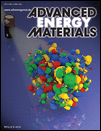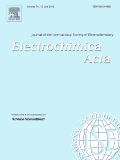
JOURNAL OF THE ELECTROCHEMICAL SOCIETY
Scope & Guideline
Pioneering Research in Materials Science and Renewable Energy
Introduction
Aims and Scopes
- Electrochemical Energy Storage:
Research on battery technologies, including lithium-ion, sodium-ion, and other emerging battery systems, focusing on improving capacity, cycle stability, and efficiency. - Electrocatalysis and Fuel Cells:
Studies on electrocatalysts for fuel cells, including the development of novel materials and the optimization of performance for hydrogen production and CO2 reduction. - Sensors and Detection Technologies:
Development of electrochemical sensors for the detection of various analytes, including environmental pollutants, biological markers, and food contaminants. - Corrosion Science:
Investigation into the mechanisms of corrosion and the development of protective coatings and materials to enhance durability in electrochemical systems. - Electrochemical Interfaces and Mechanisms:
Studies focusing on the interfacial phenomena in electrochemical systems, including solid-electrolyte interfaces, reaction kinetics, and mass transport. - Materials Development and Characterization:
Research on new materials for electrochemical applications, including nanomaterials, metal-organic frameworks, and composites, with a focus on their electrochemical properties.
Trending and Emerging
- Solid-State and Next-Generation Batteries:
Research on solid-state batteries and next-generation lithium-ion technologies is gaining momentum, focusing on improving energy density, safety, and longevity. - Electrocatalysis for CO2 Reduction:
There is an increasing emphasis on electrocatalytic processes aimed at CO2 reduction, reflecting global sustainability goals and the need for carbon-neutral technologies. - Nanomaterials and Hybrid Systems:
The use of nanomaterials and hybrid systems in electrochemical applications is trending, with research focusing on enhancing performance and efficiency in batteries and sensors. - Smart and Flexible Electrochemical Sensors:
The development of innovative, flexible, and smart electrochemical sensors for real-time monitoring of environmental and biological systems is on the rise, showcasing the integration of advanced materials and technologies. - Machine Learning and Data-Driven Approaches:
The application of machine learning and advanced data analytics in electrochemical research is emerging, particularly for predictive modeling and optimization of electrochemical systems.
Declining or Waning
- Traditional Corrosion Studies:
While corrosion remains a significant area of research, the focus has shifted towards more innovative approaches and materials, leading to a decline in traditional corrosion studies that do not incorporate new technologies or materials. - Basic Electrochemical Theory Applications:
Research papers that primarily focus on basic theoretical applications of electrochemistry without integration into practical or applied contexts have become less common, as the community increasingly values applied research. - Conventional Battery Technologies:
Research on conventional lead-acid and nickel-metal hydride batteries has waned as interest grows in next-generation battery technologies such as lithium-sulfur and solid-state batteries. - Low-Temperature Fuel Cell Research:
There appears to be a diminishing trend in publications focused on low-temperature fuel cell technologies, as research interests have shifted towards high-temperature and solid oxide fuel cells.
Similar Journals

Electrochemical Society Interface
Empowering Innovation through Electrochemical InsightsElectrochemical Society Interface is a prominent journal within the field of electrochemistry, published by the Electrochemical Society Inc. The journal, carrying the ISSN 1064-8208 and E-ISSN 1944-8783, serves as a vital platform for researchers, professionals, and students alike, aiming to bridge the gap between cutting-edge research and practical applications in the electrochemical domain. With a convergence period spanning from 1992 to 2024, the journal enjoys a respectable ranking in the Q3 Quartile of the 2023 Electrochemistry category. Although it does not currently offer open access options, its articles provide valuable insights into various aspects of electrochemical research and technology, enhancing the scholarly communication in this important field. By maintaining high standards in research dissemination, Electrochemical Society Interface continues to foster innovation and contributes significantly to the developments in electrochemical processes and materials.

Portugaliae Electrochimica Acta
Catalyzing Discovery in Electrochemical ProcessesPortugaliae Electrochimica Acta is a distinguished journal dedicated to the field of electrochemistry, published by the SOCIEDADE PORTUGUESA ELECTROQUIMICA. With a notable ISSN of 0872-1904, this journal serves as a vital resource for researchers, professionals, and students interested in advancing their understanding of electrochemical processes. Though it is currently categorized in Q4 in the 2023 Electrochemistry rankings, the journal contributes significantly to the academic discourse from its base in Coimbra, Portugal. The journal's timeline spans actively from 2008 to 2025, ensuring a sustained engagement with emerging research. While the journal does not offer open access options, it remains an authoritative source noted for promoting innovative electrochemical research and fostering academic connections within the discipline. Researchers are encouraged to submit their findings and explore the latest contributions to this expanding field.

Energy Materials
Advancing the Future of Sustainable Energy Solutions.Energy Materials is a pioneering journal published by OAE PUBLISHING INC, dedicated to the dynamic field of energy materials science and engineering. With a focus on advancing knowledge related to materials used in various energy applications such as batteries, fuel cells, and solar cells, this open-access journal aims to disseminate cutting-edge research and innovative methodologies to a global audience. By offering a platform for original research, reviews, and case studies, Energy Materials plays a crucial role in bridging the gap between materials science and energy technology, facilitating the development of sustainable energy solutions. Researchers, professionals, and students alike will find invaluable insights in its pages, fostering advancements in this essential sector. To explore the latest developments in energy materials, visit Energy Materials at OAE PUBLISHING INC.

Energy & Environmental Materials
Exploring the Nexus of Energy Efficiency and Environmental StewardshipEnergy & Environmental Materials, published by WILEY, is an esteemed academic journal dedicated to pioneering research in the multifaceted domains of energy, environmental science, and materials science. Since its inception in 2018, this journal has rapidly established itself as a leading platform, holding a prestigious Q1 ranking across multiple categories including Renewable Energy, Sustainability, and Waste Management, reflecting its significant contributions to advancing knowledge in these critical areas. With a robust Scopus ranking that positions it in the top percentile for Environmental Science and Materials Science, it caters to a diverse audience of researchers, professionals, and students seeking cutting-edge findings and practical applications in energy efficiency and sustainable materials. This open-access journal facilitates the dissemination of innovative research and aims to bridge the gap between scientific exploration and real-world solutions for a sustainable future. The editorial team encourages submissions that explore both theoretical and practical aspects, ensuring that every publication not only contributes to the academic landscape but also drives impactful change in energy and environmental practices.

Energy Material Advances
Unlocking Potential in Energy Material AdvancementsEnergy Material Advances, published by the American Association for the Advancement of Science, stands at the forefront of energy research, showcasing groundbreaking studies in the realm of renewable energy, fuel technology, and materials science. With the journal's commitment to open access since 2020, it aims to democratize knowledge and foster innovation across a global community of researchers, professionals, and students. The journal boasts an impressive impact factor, placing it firmly within the Q1 category across multiple disciplines including Energy (miscellaneous), Fuel Technology, and Renewable Energy, Sustainability and the Environment, highlighting its significance in advancing scholarly discussions. In the latest Scopus rankings, Energy Material Advances ranks among the top 10% of journals in its field, affirming its role as a pivotal resource for current and emerging trends in energy materials. The journal is dedicated to facilitating collaborative efforts and inspiring novel approaches to the challenges posed by energy sustainability and technological advancement.

Journal of the Korean Electrochemical Society
Catalyzing Collaboration in the Electrochemical CommunityJournal of the Korean Electrochemical Society (ISSN: 1229-1935, E-ISSN: 1229-1935) stands as a prominent publication in the rapidly evolving field of electrochemistry. Published by the prestigious Korean Electrochemical Society, this journal serves as a vital platform for researchers, professionals, and students eager to disseminate and access cutting-edge studies related to electrochemical processes, materials, and technologies. With an emphasis on promoting innovative research and practical applications, the journal aims to foster collaboration and knowledge exchange within the global electrochemistry community. Although not an open access journal, it provides comprehensive and rigorous peer-reviewed content that ensures the highest scientific quality, making it a valuable resource for anyone involved in the field. Located in Seoul, South Korea, it continues to contribute significantly to the advancement of electrochemical sciences, addressing key challenges and developments that shape the future of technology and environmental sustainability.

Advanced Energy Materials
Pioneering the Future of Sustainable MaterialsAdvanced Energy Materials is a leading academic journal published by WILEY-V C H VERLAG GMBH, focusing on the rapidly evolving fields of materials science and renewable energy technologies. With an impressive impact factor and recognition as a top-tier journal, it ranks within the Q1 category in both Materials Science (miscellaneous) and Renewable Energy, Sustainability and the Environment as of 2023. Spanning from 2011 to 2024, the journal serves as an essential platform for researchers, professionals, and students eager to explore groundbreaking advancements in energy materials, fostering innovative solutions to global sustainability challenges. The journal's authoritative content is supported by rigorous peer review, ensuring high-quality research contributes to the academic community and beyond. Located in Weinheim, Germany, Advanced Energy Materials stands at the forefront of scientific inquiry, making it an invaluable resource for those invested in the future of energy and materials science.

eScience
Exploring the Frontiers of Electrochemistry and SustainabilityeScience, published by KEAI PUBLISHING LTD, is an innovative open-access journal that has rapidly established itself as a leading platform in the fields of Electrochemistry, Materials Chemistry, and Renewable Energy, Sustainability, and the Environment. Since its inception in 2021, eScience has garnered recognition for its high-quality research, achieving an impressive Q1 ranking in each of its primary categories as of 2023. With a remarkable Scopus ranking—placing it among the top percentile of journals in these disciplines—eScience serves as an essential resource for researchers and practitioners aiming to advance knowledge and application in sustainable practices and materials innovation. As an open-access journal, eScience supports widespread dissemination of vital research, ensuring accessibility for all, which is critical in addressing contemporary global challenges. The journal's commitment to fostering interdisciplinary dialogue and collaboration positions it as a cornerstone for those dedicated to pushing the boundaries of scientific discovery.

Battery Energy
Driving Progress in Renewable Energy Research.Battery Energy is a pioneering open-access journal established by Wiley in 2022, dedicated to the dynamic field of energy storage and battery technologies. With an E-ISSN of 2768-1696, this journal plays a pivotal role in disseminating innovative research and advancements pertinent to the energy sector, including renewable energy solutions and sustainability practices. It holds a respectable position in Scopus rankings, being placed 32nd out of 78 in the Energy category and 130th out of 270 in Renewable Energy, Sustainability, and the Environment, showcasing its growing impact within the academic community. The journal aims to provide an inclusive platform for researchers, professionals, and students to share insights, foster collaboration, and tackle the pressing challenges associated with battery energy storage. By promoting open access, Battery Energy ensures that cutting-edge research is readily available to a global audience, facilitating the continued evolution of battery technologies for a sustainable future.

ELECTROCHIMICA ACTA
Connecting Scholars to the Heart of Electrochemical InnovationELECTROCHIMICA ACTA is a prestigious academic journal dedicated to the field of electrochemistry and chemical engineering. Published by PERGAMON-ELSEVIER SCIENCE LTD, this journal stands out with its impressive impact factor and is categorized in the top quartile (Q1) for both Chemical Engineering and Electrochemistry in 2023, further cementing its role as a leading venue for cutting-edge research. With a publication history dating back to 1959 and converging into 2024, it has established a substantial archive of influential articles that explore various aspects of electrochemical processes, materials, and applications. Researchers and professionals in the field benefit from the journal’s high visibility, as it ranks remarkably well according to Scopus metrics, with a position in the 90th percentile for General Chemical Engineering and 84th percentile for Electrochemistry. Although ELECTROCHIMICA ACTA does not currently offer open access, it continues to serve as a vital resource for those seeking to expand their knowledge and explore innovative developments in electrochemical science.